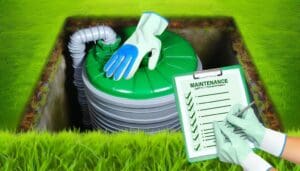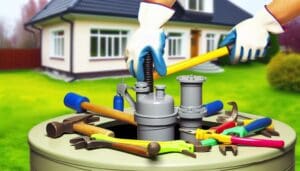Discover how to protect your septic system from breakdown with...
Read MoreYou & Your Septic Tank
Five Essential Maintenance Tips for Basic Septic Systems
Our professional septic service team offers comprehensive septic tank pumping services to keep your system running smoothly. Get a FREE Quote Today.

Five Essential Maintenance Tips for Basic Septic Systems
Septic systems, the silent soldiers of sanitation, require your regular attention to ensure they continue functioning flawlessly. You might be wondering, ‘What sort of maintenance does a basic septic system need?’
Well, the answer isn’t complicated, but it does involve several essential steps. From understanding the components to proper waste disposal, there’s more to maintaining your system than meets the eye.
Stick around to discover the five essential tips that will help you keep your septic system in top-notch condition.
Key Takeaways
- Regular septic tank pumping is crucial to prevent solids buildup and sewage overflow.
- Implementing efficient water usage practices can extend the lifespan of a septic system.
- Proper waste disposal is essential to prevent blockages and system problems.
- Recognizing signs of septic system failure early allows for preventative measures to be taken.
Understanding Septic System Components
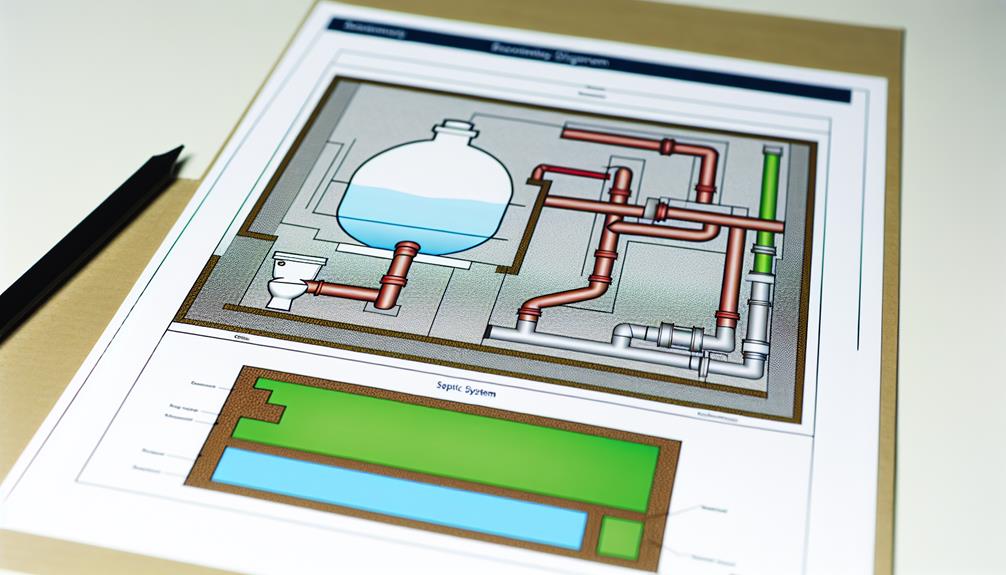
To properly maintain your septic system, it’s essential to understand its key components and how they function. Your septic system is a miniature wastewater treatment plant, primarily composed of a septic tank and a drain field. Regular maintenance can significantly extend the system lifespan and reduce the need for component replacement.
Your septic tank is where waste material is separated. The solids settle at the bottom, forming a sludge layer. The lighter waste, like oils and grease, float to the top, creating a scum layer. Between these two layers is relatively clear water. Bacteria break down the solid waste, reducing its volume and the potential for blockage.
The drain field, or leach field, handles the clear water that exits the tank. It’s a series of pipes with holes that allow the water to seep into the ground. Here, further treatment occurs as the soil’s natural bacteria remove harmful bacteria, viruses, and nutrients.
Understanding these components helps you make informed decisions about maintenance. You’ll be able to recognize signs of trouble and know when to call a professional. With the right care and attention, you can extend your septic system’s lifespan and delay costly component replacement.
Regular Septic Tank Pumping
Having grasped the fundamental components of your septic system, it’s crucial to prioritize regular septic tank pumping as a key aspect of maintenance. Pumping frequency is determined by several factors including the size of your tank, the number of people in your household, and the volume of wastewater generated.
Regular pumping eliminates the buildup of solids and prevents the overflow of sewage into your yard or house, thus protecting your property and the environment. Professional services are recommended for this task as they have the necessary equipment and expertise to do the job safely and efficiently.
The table below provides a general guide for septic tank pumping frequency.
| Tank Size (gallons) | Household Size (people) | Pumping Frequency (years) |
|---|---|---|
| 1000 | 1-2 | 3-5 |
| 1250 | 3-4 | 3-4 |
| 1500 | 5-6 | 3 |
| 1750 | 7-8 | 2-3 |
| 2000 | 9-10 | 1-2 |
Efficient Water Usage
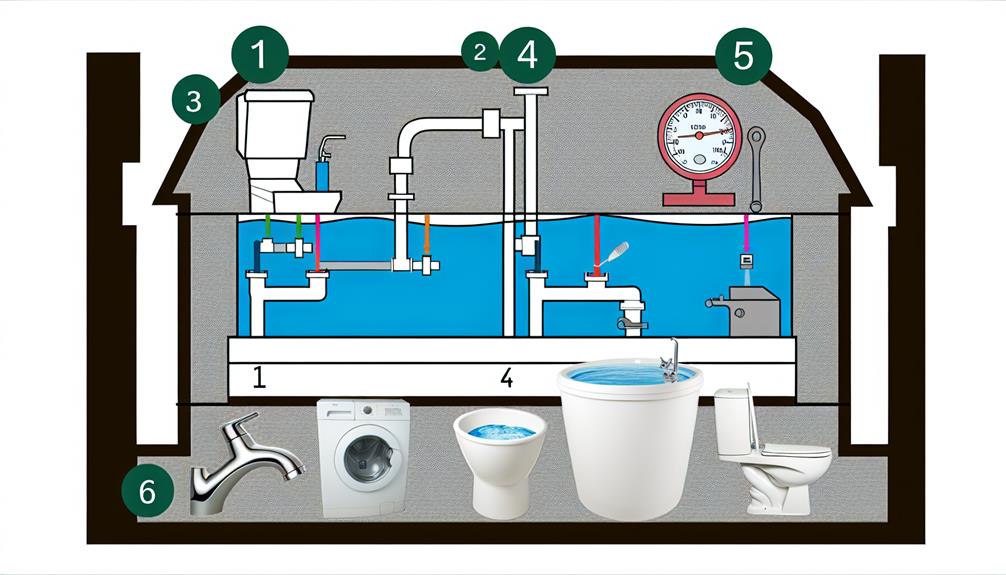
Implementing efficient water usage practices in your daily routine can significantly extend the lifespan of your septic system and enhance its performance. Efficient water usage reduces the amount of water that flows into the septic tank, decreasing the risk of potential overflow and damage.
Here are some water conservation strategies that you can incorporate:
- Install Low Flow Appliances: These devices, such as low-flow showerheads and toilets, use significantly less water than traditional models, reducing the strain on your septic system.
- Adjust your Laundry Habits: Instead of doing all your laundry in one day, spread it out over the week to lessen the water load on the system at any given time.
- Fix Leaks Promptly: A dripping faucet or running toilet can waste a significant amount of water, overloading your septic system. Prompt repair helps prevent unnecessary strain.
Proper Waste Disposal
In navigating the path to a well-maintained septic system, it’s crucial to understand the importance of proper waste disposal. Your septic system isn’t a trash can, it’s a living filter that treats wastewater. Therefore, you must be mindful of what you’re putting down your drains.
That’s where waste segregation education comes in. Understanding the difference between biodegradable and non-biodegradable waste, and disposing of them appropriately, can prevent blockages and other problems in your septic system. For instance, non-biodegradable items such as plastics, metals, or chemicals must be kept out of your septic system, while biodegradable waste like food scraps can be safely composted.
The benefits of composting are numerous. Not only does it reduce the amount of waste going into your septic system, but it also creates a natural fertilizer that can improve soil health. Plus, it’s an environmentally-friendly practice that reduces methane emissions from landfills.
Signs of Septic System Failure
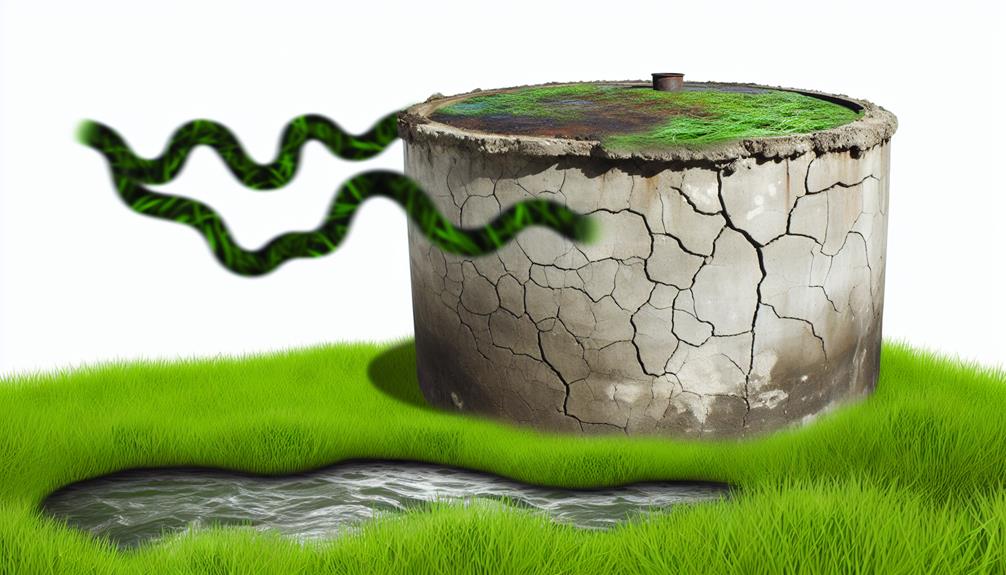
While proper waste disposal can significantly prolong the life of your septic system, it’s equally vital to recognize the signs of system failure before it’s too late. Learning to identify failure symptoms early allows you to take preventative measures, saving you time and costly repairs down the line.
Here are three common signs of septic system failure:
- Foul Odors: If you start to notice unpleasant smells around your property, particularly near the septic tank or drain field, it’s often a clear sign that your system isn’t functioning properly.
- Slow Drains: Slow-draining sinks, showers, or toilets can indicate a problem. While this could be due to a simple clog, if consistent or happening in multiple places, it may point to a septic system issue.
- Pooling Water: Water pooling in your yard, especially around the septic tank area, signifies a potential failure. This usually means your system is overfilled and leaking wastewater.
Frequently Asked Questions
What Are the Costs Associated With Installing a Basic Septic System?
You’ll need to consider several factors for a cost analysis of a basic septic system, including installation, size and system efficiency. Typically, you’re looking at a range from $3,000 to $15,000, depending on these variables.
Are There Any Environmental Concerns Related to Using a Septic System?
Yes, there are. If not managed properly, septic systems can harm the environment. Regulations exist to mitigate these risks. You should also consider sustainable alternatives to traditional septic systems to lessen your environmental impact.
What Is the Lifespan of a Typical Septic System and How Can It Be Extended?
Your septic system’s lifespan typically spans 25-30 years. You can extend it with system upgrades and preventive measures like regular inspections, careful water use, and proper waste disposal to ensure its longevity.
Is It Necessary to Get a Permit for Installing a Septic System?
Yes, you’ll need a permit for installing a septic system. Permit penalties can be severe, so always follow installation regulations. Don’t risk fines or legal trouble. It’s essential to get approval before starting your project.
What Are Some Common Problems That Can Occur With Septic Systems in Different Climates or Geographical Locations?
You might face issues like freezing in colder climates or excessive moisture in humid areas. Climate specific solutions and geographical adjustments are essential to tackle these common problems with septic systems in different locations.
Conclusion
Just like a car needs regular servicing, your septic system also demands consistent care. Don’t let it become the invisible elephant in your yard.
Keep it healthy with regular pumping, wise water usage, and proper waste disposal. Be vigilant for signs of failure.
Remember, good septic system maintenance isn’t just about preventing problems – it’s about ensuring the longevity of your system. It’s an investment in your home’s future, and more importantly, in your peace of mind.
You may also like...
Why Are DIY Fixes Essential for Septic Tank Pumping?
Tap into the importance of DIY fixes for septic tank...
Read MoreUnveiling the Average Costs of Septic Tank Pumping
Master the mysteries of septic tank pumping costs and avoid...
Read More
The Best Septic Tank Pumping Services Near You

Answer Some Questions
Let us know about your needs so we can find you the right septic tank pros.

Get Quotes
We will put you in touch with the right septic tank pros for your job and location.

Hire Right
Compare quotes, message or call pros, and hire only when ready.

